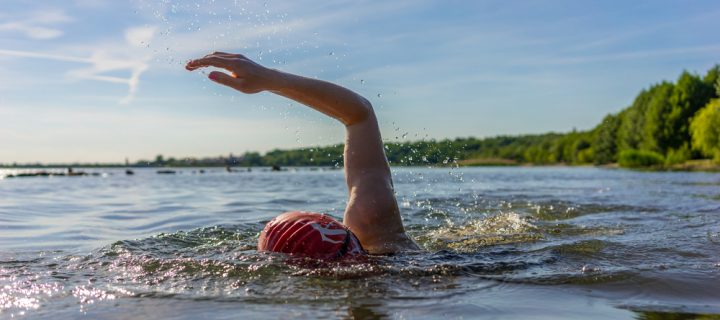Every summer, I seem to come home from the annual trip to the lake with a rash. I know: gross.
Well, sometimes it’s minor, and sometimes a bit more obvious but the consistent element is that I never know why I get it.
Most of the time I assume it’s somehow related to the heat, since we go in late August.
This year, however, we took our trip earlier and the weather was mild but the irritation continued to show up. In fact, I had the longest outbreak ever.
So, what the heck is causing it? Reflecting, I thought about how I hadn’t tried any new foods this time except for our neighbors shrimp dip, (and I’m not allergic to shell fish), and it’s not like I’d crossed with a plant like poison ivy, as I didn’t take any walks off the beaten path.
Pretty boring holiday, huh?
I hadn’t even really spent that much time sunbathing on the beach either, and so anything related to the sun seemed to be off the list. But what I did do was spend a lot of time in the water.
Was that it?
It was only once we stopped in our town’s café, heading back to the city, that I got my answer.
Sitting innocently on a bright orange informational flyer on the bulletin board were my two words of warning: SWIMMER’S ITCH.
Since all of my symptoms match what I read, I think this must be the culprit. Which is double gross, as I never would have thought my rash was related to snails and bird feces, but anyways. What can we do, we are all part of this great big ball of Earth we call home!
If you don’t want to be a victim too, I suggest you read on.
Here’s what I learned: swimmer’s itch is an allergic reaction some people get from swimming in naturally occurring bodies of water. You can get it from swimming in lakes, ponds, and even oceans.
What causes the nasty beast? Microscopic parasites originating from infected snails (yuck!) swimming in the water contaminate the swimming area.
What happens is, the parasites burrow into your skin, and for some people, this prompts an allergic reaction.
Is it dangerous? It’s true, the rash can look pretty bad but it typically clears up within two or three days.
Generally it doesn’t cause any more harm than making the victim quite annoyed and itchy, but it can be like a devil in hiding. It’s not always immediately obvious that you have swimmer’s itch as the reaction can surface just minutes after swimming but it also sometimes waits a few days before showing itself to the world via reddish pimples or blisters on the victim’s skin.
Unfortunately, there is no foolproof solution for treating swimmer’s itch. Any anti-itch cream or a solution like calamine lotion can help to relieve the pesky sensation, and it can also do wonders to take an antihistamine since at its base, the rash is an allergic reaction.
So, what can you do to avoid getting it? It’s really hard to recommend staying out of the water in order to avoid the parasites. Truth is, you’ve likely purposely traveled some distance to see that same water and spend time by it.
The few things that you can do to help limit your chances of getting a reaction are the following: choose your swimming spots carefully, avoid marshy areas, rinse off after swimming and dry vigorously with a towel, avoid hanging out in shallow water at the shoreline, and wash your suit often.
And, of course, if the itching becomes too strong, see your doctor. Happy splashing.
Photo Credit: DZiegler/Shutterstock









